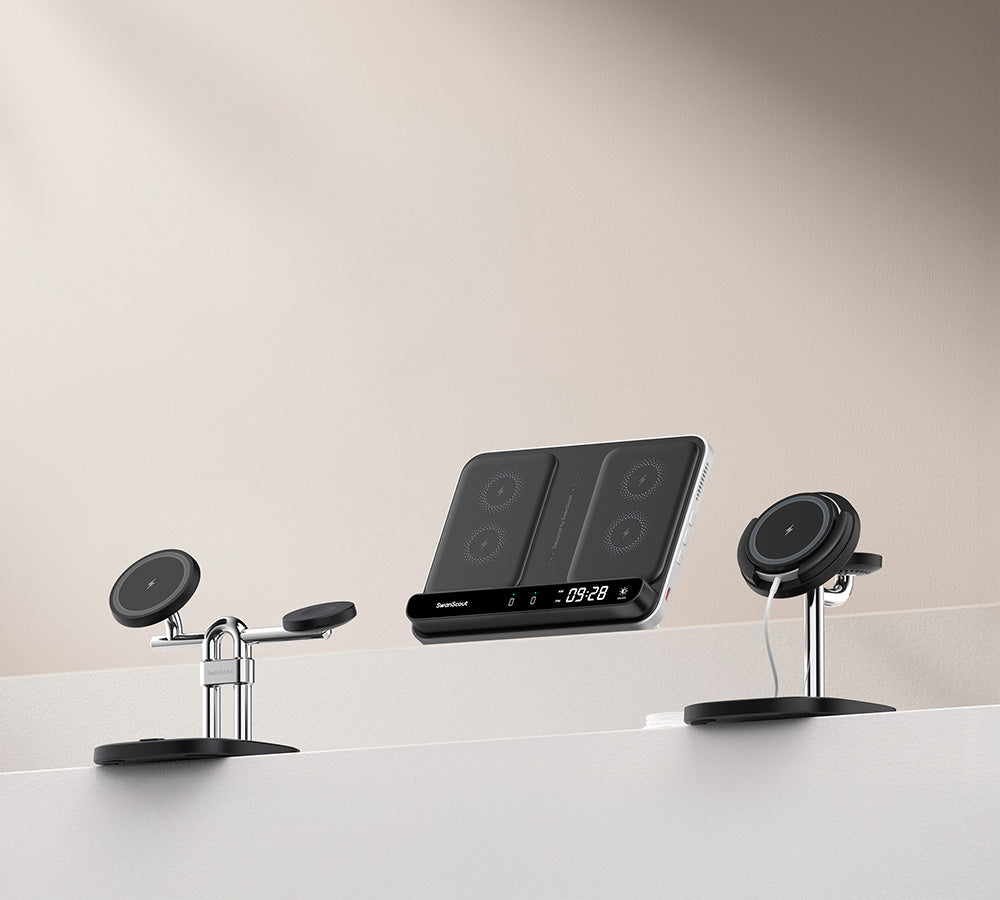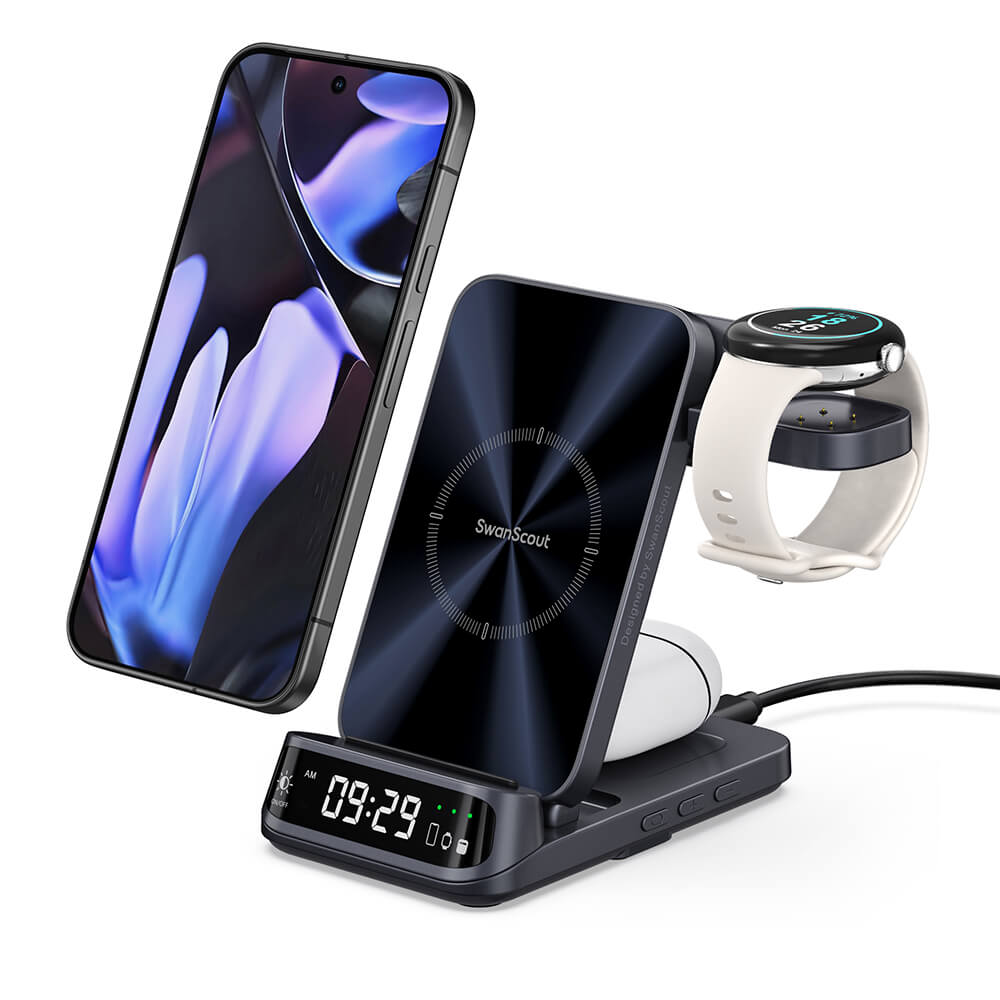On August 20, 2025, Google held its Made by Google event in Brooklyn, New York. Honestly, the event was a bit of a letdown. The presentation, hosted by Jimmy Fallon and featuring various celebrities, felt cringe and a little too much like a late-night infomercial. Worse, most of the Pixel 10 series details were already leaked before the event, so there weren’t many surprises. If you missed the livestream, I wouldn’t recommend spending over an hour watching the replay. That said, the Pixel 10 series itself brings some exciting upgrades worth talking about, especially the new Tensor G5 chip and magnetic wireless charging. If you’re thinking about upgrading to the Pixel 10 series, here are 6 key things to consider before making your decision.
1. The New 3nm Tensor G5 Chip
The biggest highlight of the Pixel 10 series is the new Tensor G5 chip, now made by TSMC instead of Samsung, using a cutting-edge 3nm process. This chip is a serious upgrade, with an 8-core design that boosts CPU performance by 34% and TPU (AI processing) performance by an impressive 60%. While Google didn’t share specific GPU details, the Tensor G5 includes GPU virtualization, but it’s still not the best choice for heavy mobile gaming. The chip also offers better heat management, allowing it to run at higher power without overheating, which means more consistent performance. Plus, it significantly improves AI processing speed and efficiency, which we’ll dive into later. Overall, the Tensor G5 is a major step up from the 4nm Tensor G4, but it still lags behind chips like the Snapdragon 8 Elite or Apple’s A18 Pro. If you’re a hardcore mobile gamer, you might want to consider other flagship phones with more powerful chips.

2. Pixelsnap: Qi2 Magnetic Charging and New Accessories
Another big upgrade is the addition of Qi2 wireless charging with magnetic support, a smart move that brings the Pixel 10 in line with modern trends. This means you can use magnetic accessories like chargers or mounts without needing a special case, making life much easier for Android users. Google also introduced a new line of Pixelsnap accessories, including a magnetic charger, a charging stand, and a circular phone holder (similar to the one used for the Pixel Tablet, just smaller). These offer faster charging speeds, but the designs aren’t particularly exciting, as they’re essentially a basic puck charger and a stand with a simple, detachable design. While they lack the unique flair of the older $79 Pixel Stand, they’re more affordable, priced at $29, $39, and $69.
3. Triple Camera System, but with a Downgraded Main Sensor
For the first time, the Pixel 10 series features a triple camera system: a 48MP wide-angle main camera, a 13MP ultra-wide lens, and a new 10.8MP telephoto lens with 5x optical zoom. The addition of optical zoom is a big deal, as it’s rare in phones at this price point. However, to keep costs down, Google made a trade-off: the main camera sensor is smaller than the one in the Pixel 9, which could mean less detail in photos. Google is compensating with AI-powered image enhancements, but we’ll need real-world tests to see how they perform. The Pixel 10 also introduces Pro Res Zoom, letting you take photos at up to 100x magnification, but these images rely heavily on AI processing, so they may not always feel “real.” If you’re picky about camera quality, especially for the main wide-angle lens, the Pixel 10 might disappoint. But if you’re excited about AI-driven photography, Google’s expertise as an AI leader could make this worth trying.
4. A Dazzling Array of AI Features
The Pixel 10 series shines brightest when it comes to artificial intelligence. Unlike Apple’s quiet approach to AI at WWDC, Google packed the Pixel 10 with exciting new AI features that steal the show. The standout is Magic Cue, a context-aware AI that pulls information from across apps to offer smart suggestions. For example, if you get a restaurant reservation and your partner texts asking for the address, Magic Cue can generate a suggestion reply with the details. Worried about privacy? Google promises this all happens on-device, so your data stays on your phone. Other cool features include AI Voice Translation, which uses AI to read translations in a voice that sounds just like yours, and a new Journal app similar to Apple’s, which tracks goals and health data automatically. There’s also text-based photo selection, upgraded voicemail features, and more. You can check out Wired’s detailed report for the full list. If you love the idea of AI making daily tasks easier, the Pixel 10’s AI upgrades make it a compelling choice.
5. Design: Pretty Much the Same as Before
The Pixel 9 series was praised for its sleek design, but the Pixel 10 series doesn’t bring much new to the table. It looks almost identical to its predecessor, which might disappoint some fans. That said, expecting Google to overhaul the design every year is a bit unfair—Apple’s been reusing iPhone designs for years! The Pixel 10 sticks with the Pixel 9’s look, but it introduces some fresh colors. The standout is Indigo, which reminds me of the vibrant Really Blue from the original Pixel XL, only better. There’s also a cool Lemongrass shade. Annoyingly, Indigo is only available on the standard Pixel 10, not the Pro or XL models, which limits options for fans of this color. If you were hoping for a bold design refresh, you might be let down, but the familiar look is still sleek and functional.
6. No Physical SIM Slot (Don’t Worry Outside the U.S.)
Is eSIM really the future? It has benefits, like freeing up space for bigger batteries or slimmer phone designs, but many users still prefer physical SIM cards. In a recent Android Authority poll, 75% of users said they want physical SIM slots to stay. For people who don’t travel much or swap SIMs often, eSIMs can feel less convenient. The bad news? The Pixel 10 series in the U.S. drops the physical SIM slot entirely, relying solely on eSIM (except for Pixel 10 Pro Fold). The good news? Outside the U.S., the Pixel 10 keeps both a nano-SIM slot and eSIM support, giving users more flexibility. Personally, I think eSIM isn’t quite ready to take over, especially since it’s already hitting roadblocks in the U.S., let alone globally. If you’re in the U.S. and not a fan of eSIM, this is something to consider when choosing the Pixel 10 (though the Pixel 10 Pro Fold still has a physical SIM slot).

These are the six key things to know before upgrading to the Pixel 10 series. It brings some exciting upgrades, like the Tensor G5 chip and magnetic charging, but there are trade-offs, like the downgraded main camera sensor and weaker GPU performance for gaming. If these drawbacks don’t affect your needs, the Pixel 10 series is a solid choice that’s competitive for its price. With shipping starting in about just a week, what do you think of the Pixel 10 series? Are you planning to upgrade? Let us know!






